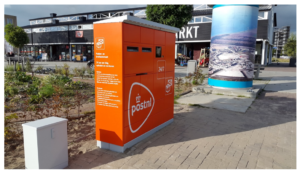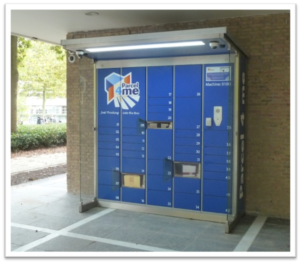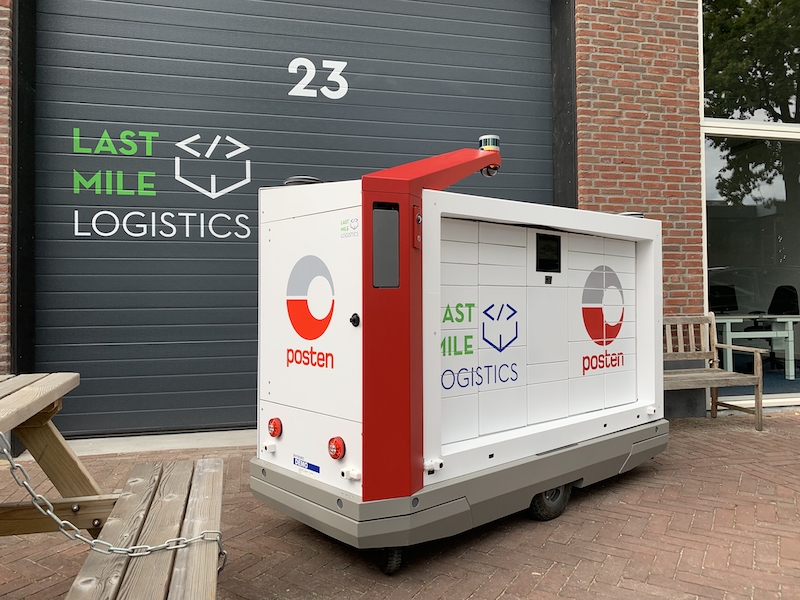Bart Sebregts, co-founder of the Netherlands’ Last Mile Logistics/Parcel4me, will present Parcel machines – opportunities, at next month’s Parcel+Post Expo Conference.
Please describe your presentation.
I will talk about the opportunities for carriers and national postal operators when they start to work with parcel machines, and also what operational problems they can run into. Relatively small IT companies, like Last Mile Logistics and Parcel4me, can help clients successfully deploy their network of parcel machines to grow the business and develop new business. I will also talk about the security of such parcel machines, and network/software-related issues.
How can postal machines help posts and their customers?
Last-mile costs are very high and are a large percentage of the total delivery costs. Consumers often are not at home and the impact on the environment is unacceptable. Many consumers already think that trying to deliver a parcel to their door is outdated. Postal and parcel machines will solve this problem. And if postal companies don’t implement the parcel machines themselves, newcomers will do so and make the postal companies lose business and money. Last Mile Logistics [LML] is not saying that in five years’ time deliveries will only be made to parcel machines, but we are saying that a substantial percentage of all parcels in a region will be delivered in a parcel machine, regardless of whether it is a high- or low-density region.
Are there any challenges posts should be aware of? How are these resolved?
Last Mile Logistics BV has seen a few challenges in implementing parcel machines. For example, installing parcel lockers requires changes to current IT systems in order to be able to communicate with LML’s servers to control the parcel machines. In addition, finding or installing a connection to a 230V electrical network at the desired locations is very hard to do and very time-consuming. Also, getting permits for placing the parcel machines is often an underestimated difficulty of installing the network; these permits are sometimes very difficult to get.
Posts must realize that lockers are a different way of working for the mailman and delivery agents of the postal operator, and must prepare for the transition. Also, collaboration with e-shops and other shippers to give their customers access to the new parcel machines is a very important component to success – this is required to quickly create volume in the new parcel machine network.
 How can postal machine networks help posts grow and develop new business?
How can postal machine networks help posts grow and develop new business?
As mentioned earlier, if postal companies don’t implement the parcel machines themselves, newcomers will do so, meaning the postal companies lose business and money. So NOT doing it will decrease their business. There are all sorts of interesting extra services that can be provided when working with parcel machines compared with trying to deliver to a house.
Depending on the business (market share of the postal operator, the size of the country and density of the population) and the size of the parcel machines (number and size of the lockers) ROI can vary somewhere between two and seven years.
Are parcel machines secure? How is security ensured?
That question has two sides: the first is IT security; and the second is the prevention of theft, intrusion, vandalism or robbery. The solution safeguards against criminal activity such as unauthorized access in several ways.
To prevent unauthorized people trying to access the parcel machine: consumers need a unique code that is generated by LML and distributed to Company X; Company X should then distribute that code in a safe way to the correct consumer. Any attempt to enter a random code on the touchscreen is marked as a potential threat and logged, and Company X can look up these events via the LML CP.
Vandalism can be deterred by mounting at least one camera that can record video. The live images and recorded images are accessible for Company X super users and Company X security staff. The camera can be equipped with Video Content Analysis [VCA] software, which can detect loiterers. As an extra option LML can also add audio to the Parcel Machines.
Intrusion detection sensors can be installed at crucial locations, such as back panels, side panels, roof, technical compartment and on the locks, so all doors have an intrusion alarm. Optionally the machine can also be equipped with vibration sensors.
For one customer, LML integrated the camera, the intrusion detection system and the security software that was used in the client’s security control room.
In case of a power outage, parcel lockers can be equipped with optional batteries. The machine will send a message to the owner that the power was cut and that it is now running on batteries. The parcel machine will continue to work, as long as the batteries have power.
 Are there software issues, and if so, how are these resolved?
Are there software issues, and if so, how are these resolved?
At LML we believe that when the software is made by humans, things can go wrong. However, by testing very well before releasing and having good SLAs [service level agreements] between the parcel machine provider and postal operator, the downtime can be reduced to a minimum.
What is the tender your company won in 2019, and which national post is it with?
Now we can reveal which post the tender concerns: Norwegian Post [Posten Norge]. This involves two projects: an autonomous driving robot for deliveries, and a new parcel machine project.
We are part of a supplier consortium that has built an autonomous driving vehicle for parcel delivery in collaboration with Posten. We are also one of two suppliers working with Posten on testing a new concept automatic letter and parcel machine. More information will be released in due course.
 See Bart Sebregts, co-founder of Last Mile Logistics/Parcel4me, give his presentation at 2:40pm on Tuesday, October 1 in room 1. The full conference program can be found here.
See Bart Sebregts, co-founder of Last Mile Logistics/Parcel4me, give his presentation at 2:40pm on Tuesday, October 1 in room 1. The full conference program can be found here.


